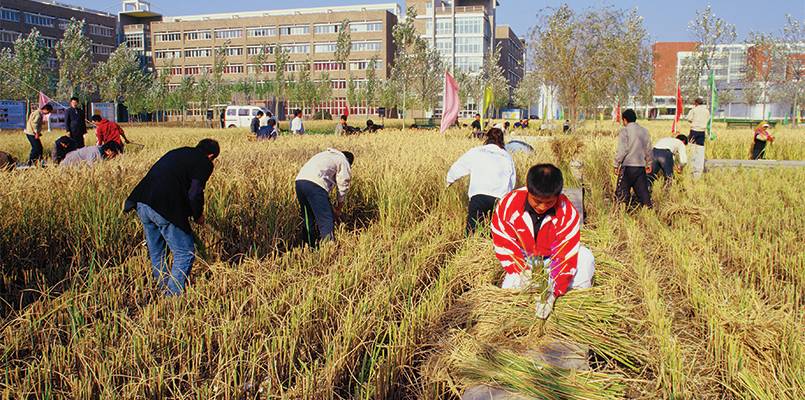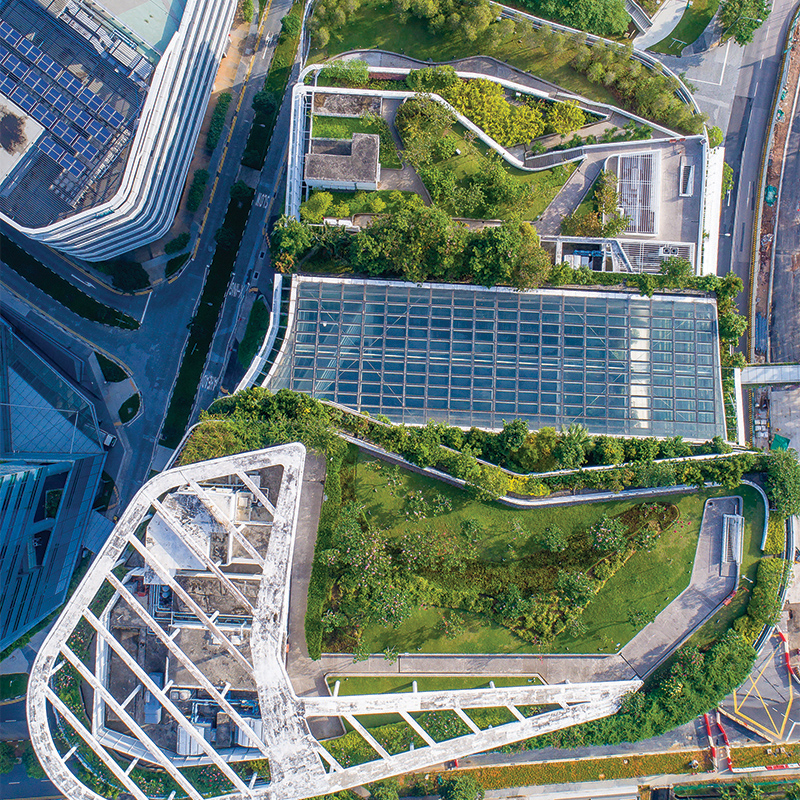Frontlines of Ecological Practice
December 19, 2019
Ecopuncture is acupuncture for the built environment. Each act of design, akin to a needle inserted into a living system-of-systems, seeks restorative goodness for the whole. It enhances the connectedness of the social and ecological, seeking positive reciprocity and strengthening the resilience of the whole.

The approach adopted by designers on the frontlines of ecological practice has several distinguishing features. First, to formulate strategy, they expand the scope of the question. The solution is never in the breakdown of parts; it is in reimagining the whole. That whole is often bigger than a developer’s brief. Second, they adopt a position on Nature that paves the way for integration, i.e., the overlay of natural and human-made systems. Lastly, form is here an instrument for integration. If a building or neighbourhood is to engage social and ecological systems, there must be a new structure of relations—new connections and configurations—that can lead to emergent patterns.
This article highlights the work and ideas of several thought leaders in Asia who bring together the social and ecological in search of new form-patterns.
KEN YEANG: INTERSECTIONS OF TECHNOLOGICAL AND BIOLOGICAL
Ken Yeang was one of the first architects to link explicitly Nature to morphology of form and its underlying systemic structure. Yeang’s bioclimatic model of the 1980s and, more recently, his ecological model reimagined the arrangement of parts (space; skin; tectonics; environmental systems; geographical siting), and re-articulated the whole in service of multiple outcomes.
Yeang’s goal is to restore the broken link between human and natural systems. Biointegration makes architecture a “prosthetic” to Nature. His projects can be viewed as prototypes, he says, to refine ideas that, for the potency of what they promise, challenge the design profession at a time when the restoration of natural systems has increasing urgency.
WOHA: OVERLAPPING SOCIAL AND ECOLOGICAL
The linking of architecture and urbanism features prominently in the work of a Singapore-based design firm, WOHA. The tropical sensibility of founding partners Wong Mun Summ and Richard Hassell was initially explored at the scale of the private home. It would eventually expand to questions on the future of the Asian city, where action at the building scale would be intentionally conflated with action at the city scale.
WOHA’s efforts in vertical greening have influenced government policy in Singapore.
Not all of WOHA’s ideas have been embraced by developers or acted upon right away. The Duxton Plain Public Housing entry was not successful in its time; it took some 14 years for their vertical village to come to fruition in SkyVille@Dawson. To this day, urban farming struggles to survive the design process, accompanied by debates on how much self-sufficiency is necessary and why. That these precepts are nevertheless laid out on paper, and integrated into considerations of cost and programme, compels stakeholders to react and discuss priorities.
YU KONGJIAN: ECOLOGY AS INFRASTRUCTURE
Yu Kongjian is a prominent Chinese landscape architect, one of the first practitioners in Asia to expound explicitly on learning from Nature, and to link this to ideas about form. He sees wisdom, particularly, in ancient agricultural practices that offer strategies and techniques for the integration of human-made systems with natural ones. Deep form is the simultaneous consideration of human beings and ecology, leading to harmony. Superficial form, prevalent in so much of what is designed today, has no interest in ecology, nor its relationship to the human condition, and can only lead to conflict.

For decades, Yu lobbied politicians at the municipal, regional and national levels. Following pushback from some stakeholders, he finally found a sympathetic ear at the highest echelons of government. He has since advocated successfully for the protection of the Grand Canal, a 1,776-kilometre waterway linking north and south China. He has also spearheaded a revision of land-planning regulations, resulting in the prioritisation of ecologically valuable land. In addition, his work on urban parks has directly influenced the Sponge City guideline that targets projects at the regional and municipal scales, and is now public policy.
This article is an excerpt from the chapter Leadership: Seeking Wholeness in the book Ecopuncture: Transforming Architecture and Urbanism in Asia, by Nirmal Kishnani. It traces the ideas of Asian thought leaders in the field of ecological design. The full chapter features several other Asian designers and culminates in an Ecopuncturist’s Guide for the Drawing Board.

To read the complete article, get your hardcopy at our online shop/newsstands/major bookstores; subscribe to FuturArc or download the FuturArc App to read the issues.
Previously Published Main Feature
Contact us at https://www.futurarc.com/contact-us for older commentaries.

